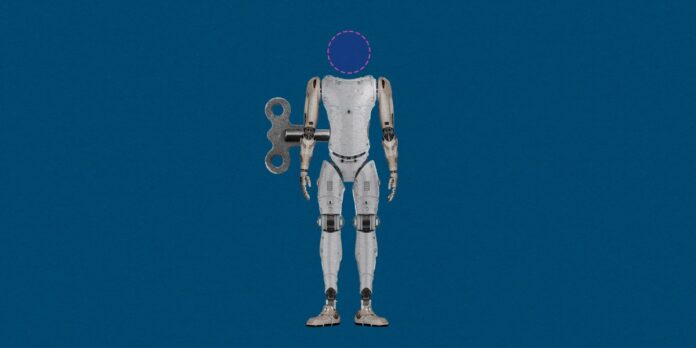I watched Daniela, one of the top experts in the world on AI-powered robotics, speak to a packed room during a Boston Robotics Expo. Rus spent part of her speech busting the myth that giant fleets are already useful in warehouses and manufacturing around the world.
This might surprise you. Investors have been clamoring for AI to make robot training faster. Figure AI, which aims to create general-purpose humanoid robotics for both home and industry, has a $1.5 billion valuation.
Amazon and automakers are conducting commercial experiments with humanoids. Bank of America predicts that a wider adoption of these robots is just around the corner. By 2050, they expect billions of humansoids to be at work.
Rus and others I spoke to at the expo suggested that this hype doesn’t add-up.
Humanoids are “mostly not intelligent,” she said. Rus showed video of her speaking to a humanoid who followed her instructions to pick up a can and water nearby plants. It was impressive. When she asked the robot to “water” a friend, it did not take into account that humans do not need watering as plants do and proceeded to douse her. “These robots are lacking common sense,” she said.
Pras Velagapudi is the chief technology officer at Agility Robotics. He detailed the physical limitations that the company must overcome. A humanoid that is strong will need a large battery and a lot of power. The heavier and stronger it is, the shorter the time it can be used without charging and the more safety concerns you will have. This robot is also difficult to manufacture.
Some impressive demos of humanoids don’t overcome the core constraints, but instead display other impressive features, such as nimble robotic arms or the ability to speak with people using a large language. These capabilities are not necessarily applicable to the jobs humanoids will be replacing (it is more efficient to program a list of detailed instructions to a robot than to speak to them, for example).
That’s not to say that fleets of humanoids will never join our workplaces. But rather, the adoption of this technology will be slow, industry-specific, and drawn out. This is related to my last week’s article: For people who view AI as a “normal” tech, and not a dystopian or utopian one, all of this makes sense. The technology that is successful in a lab setting will look very different than the one that is adopted commercially.
This is the backdrop for what happened last week with one of robotics’ biggest names. Figure AI has raised an incredible amount of money for its humanoids. In March, Brett Adcock said on X that the company is the “most sought after private stock in secondary market.” The company’s most publicized project is with BMW. Adcock has shown videos of Figure’s robots moving parts for the automaker. He also stated that the partnership was launched in just 12 months. Adcock and Figure don’t respond to media requests and they don’t attend typical robot trade shows.
In Fortune, publishedan article that quoted a BMW spokesperson, alleging the pair’s partnership involved fewer robots and a smaller scale than what Figure had implied. Adcock posted on LinkedIn that “Figure’s litigation attorney will aggressively pursue legal remedies, including, but not restricted to, defamation suits, to correct the publication’s misstatements.” On April 25, Adcock stated that “Figure’s litigating counsel will aggressively seek all available legal remedy–including, however, defamation suits–to rectify the publication’s blatant omissions.” The representative pointed me at Adcock’s statement which is lacking in details.
I think that this conflict, despite the specifics of Figure, is a good indicator of the current tech moment. Venture capitalists are frantically betting on humanoids to create the biggest market for robotics ever. They are fueled by messages such as Jensen Huang’s statement that “physical AI” is the future.
But to achieve that, countless obstacles must be overcome. We’ll have to develop safety regulations for humans who work alongside humanoids, which don’t exist yet. It’s possible that deploying such robots in one industry like automotive will not translate to success in other industries. We’ll just have to hope AI solves many problems along the way. Roboticists should be skeptical of all these things.
From what I’ve observed, roboticists are usually a patient lot. The first Roomba was launched more than 10 years after its conception. It took more than 50 year to produce the millionth robotic arm. Venture capitalists are not known to be so patient.
It’s possible that this is why Bank of America’s new prediction of widespread adoption of humanoid robots was met with excitement by investors, but skepticism from roboticists. Aaron Prather is a director of the robotics standards organisation ASTM. He said that the projections are “wildly off-base.” This makes it difficult for anyone, such as a tech journalist to peel back the curtain to see how much of an impact humanoids will have on the workplace. But I’ll do my darndest. This story was originally published in The Algorithm – our weekly newsletter about AI. Sign up to receive stories like this first





